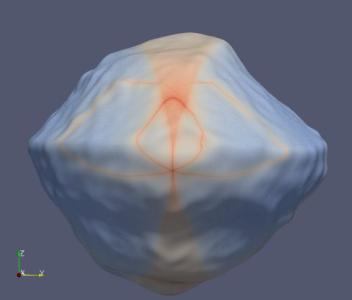Study into Ultra-Wide-Band SAR Tomography over Dry, Rocky Terrains

In recent years, surface-penetrating radars have formed a part of several ESA missions in both monostatic and bi-static configurations. Such radars can be found, for instance, on board Mars Express where, using MARSIS, the Martian sub-surface is sensed, as well as on board Rosetta where CONSERT was used to probe the comet 67P/Churyumov-Gerasimenko.
In addition, surface-penetrating radars are being implemented for the Juice mission to Jupiter’s icy moons. Meanwhile back on Earth, the airborne radar IceSAR has been flown over the ice sheets of Greenland and Iceland while – even if it is not actually a UWB radar – the Biomass mission has, as a secondary objective, ground-penetrating radar for determining the geology of arid regions. Surface-penetrating radar associated with repeat-pass observation and processing opens the way to 3D radar tomography: typically resulting in 3D imagery of the first tens of metres of the sub-surface at metric resolution to understand and to model better the formation processes and post-accretion evolution.
This technique has been proposed for several planetary missions to small bodies, especially in the frame of several M-class Cosmic Vision missions (Castalia, Marco Polo, PhoDex), planetary defence missions until phase AB1 on ESA's AIM and Hera/Juventas, and under-selection for a NASA Discovery mission. For both small bodies and airborne radar, the instrument specificity is to be ultra-wide band in range and/or Doppler in association with complex trajectories especially in case of multiple pass observation campaigns. This drives the instrument performance and finally the assessment of the science return as a function of the mission's constraints (in particular orbitography and data volume).
The main objectives of the activity described in the scope of this contract were to study UWB SAR tomography in dry rocky media for Earth and planetary remote sensing. This was achieved through:
- Development and implementation of a surface backscatter model for rocky terrains, adapted to ultra-wide band radar signals
- Development/adaptation of a SAR simulator
- Development/modification of a tomographic SAR simulator for dry rocky terrains
